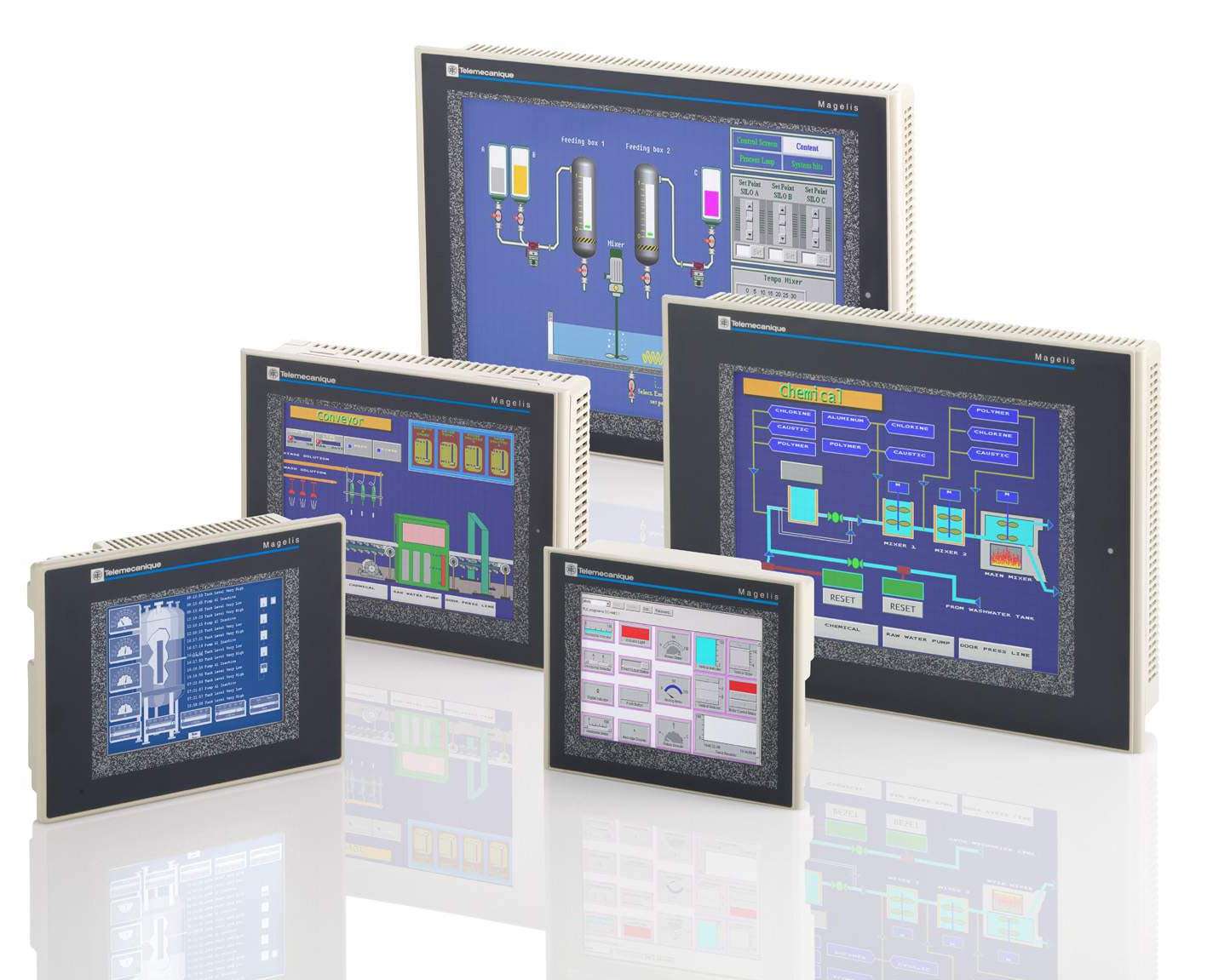HMIs, which are touchscreen-based human machine interface computers, are steadily becoming ubiquitous in business and industry. They are next-generation computers and computerized control systems which offer significant advances and advantages over their precursors including mechanical buttons, keyboards, PCs, and laptops.
Difficult industrial circumstances and environments are areas where HMIs shine. In trying environments such as factory floors, mice can get clogged up quickly and fail to work properly. Keyboards can also quickly collect airborne particulates, and that grime can cause them to fail.

PCs and laptops with fans and their hard drives are all too susceptible to failure in industrial environments where fluids or liquids spray or may spray often, there’s a lot of vibration, there’s a high count of airborne particulates, or there is extreme temperature or heat radiation flux.
Imagine getting to a critical step in a manufacturing process only to suddenly find that your mouse or keyboard commands don’t work properly. That could cause a costly slow-down, or even worse it could cause destruction of product. In certain manufacturing settings, destruction of product can mean the leaking of toxins into the environment, as well.
HMIs don’t rely on mice or external keyboards. Their touchscreen controls are insulated against harsh manufacturing environments, so that they can be more steadily relied on.
It’s not just the environmental conditions where HMIs have advantages. Lighter, flatter, and more compact, they make it much easier for a controller to find a space from which to operate, especially if they need to be deployed quickly — or, if it’s especially crucial for them to be in a safe place.
Hardwired pilot devices including gauges, panel meters, chart recorders, and annunciators can’t be deployed as efficiently in tight spaces as HMIs can be. From the economic perspective, HMIs don’t cost as much to manufacture for machine OEMs because the number of wired signals needed to power, terminated, and troubleshoot traditional panel devices is diminished, and so is the number of additional controller I/O points.
Via HMI communications applications to a bus, it’s either serial communications or bus communications that you are using. The need for lots of meters and buttons, the need to have dedicated I/O points in both analog and digital, is eliminated from the configuration — thus saving you significant money.
As if that’s not reason enough to find yourself some HMI action, consider this: touchscreen graphical content is, on the whole, more intuitive than the more familiar panel devices of precursor systems, and is easier to customize with preferred designs and labels. Virtual buttons are highly customizable and configurable, too. What this means for your business is reduced maintenance costs, and reduced training costs.
HMI touchscreens offer you tremendous flexibility. This is extremely important in the modern world of industry and business.
Imagine controlling a highly complex machine via computer interface. You will need things like graph charts and engineering screens. You will, in other words, need multiple screens. The touchscreen of the HMI does away with those very large displays, burdened with their myriad buttons. While providing a controller with more information, and features such as the ability to monitor vision system imagery straight through the screen, the system requirements and the spacial requirements are diminished.
With the HMI screens being so robust and reliable, and with these machines having essentially “infinite” capabilities, there’s no reason to wonder why industry is embracing these marvelous works of modern technology. Shouldn’t you?
Matt Stern is the Social Media Coordinator for Kontron, a global leader in embedded computer technology specializing in the production of arm modules, fanless pcs, and more.





